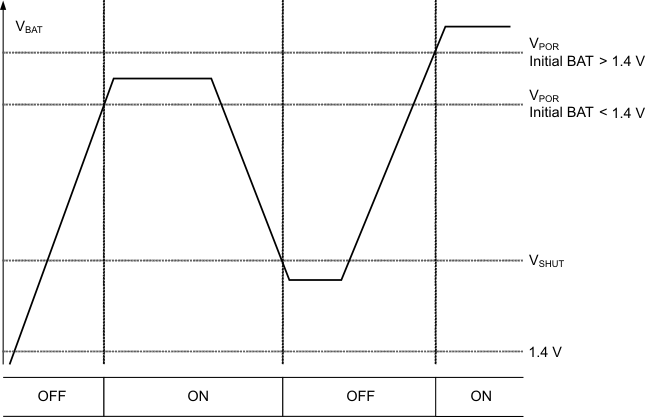SLUSAM9E July 2011 – April 2020 BQ76925
PRODUCTION DATA.
- 1 Features
- 2 Applications
- 3 Description
- 4 Revision History
- 5 Description (Continued)
- 6 Pin Configuration and Functions
-
7 Specifications
- 7.1 Absolute Maximum Ratings
- 7.2 ESD Ratings
- 7.3 Recommended Operating Conditions
- 7.4 Thermal Information
- 7.5 Electrical Characteristics: Supply Current
- 7.6 Internal Power Control (Startup and Shutdown)
- 7.7 3.3-V Voltage Regulator
- 7.8 Voltage Reference
- 7.9 Cell Voltage Amplifier
- 7.10 Current Sense Amplifier
- 7.11 Overcurrent Comparator
- 7.12 Internal Temperature Measurement
- 7.13 Cell Balancing and Open Cell Detection
- 7.14 I2C Compatible Interface
- 7.15 Typical Characteristics
-
8 Detailed Description
- 8.1 Overview
- 8.2 Functional Block Diagram
- 8.3 Feature Description
- 8.4 Device Functional Modes
- 8.5 Programming
- 8.6 Register Maps
- 9 Application and Implementation
- 10Power Supply Recommendations
- 11Layout
- 12Device and Documentation Support
- 13Mechanical, Packaging, and Orderable Information
8.4.1.1 POWER ON RESET (POR)
When initially powering up the BQ76925 device, the voltage on the BAT pin must exceed VPOR (4.7-V maximum) before the device will turn on. Following this, the device will remain operational as long as the voltage on BAT remains above VSHUT (3.6-V maximum). If the BAT voltage falls below VSHUT, the device will shut down. Recovery from shutdown occurs when BAT rises back above the VPOR threshold and is equivalent to a POR. The VPOR threshold following a shutdown depends on the minimum level reached by BAT after crossing below VSHUT. If BAT does not fall below approximately 1.4 V, a higher VPOR (7.5-V maximum) applies. This is illustrated in Figure 12.
 Figure 12. Power On State vs VBAT
Figure 12. Power On State vs VBAT Following a power on reset, all volatile registers assume their default state. Therefore, care must be taken that transients on the BAT pin during normal operation do not fall below VSHUT. To avoid this condition in systems subject to extreme transients or brown-outs, a hold-up circuit such as the one shown in the functional diagram is recommended. When using a hold-up circuit, care must be taken to observe the BAT to VC6 maximum ratings.